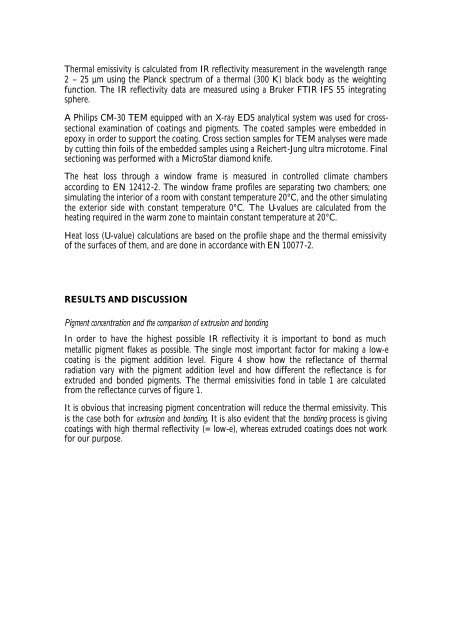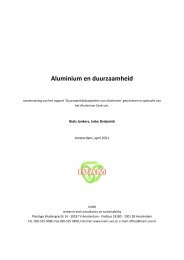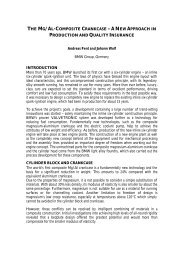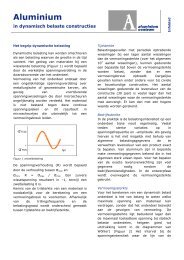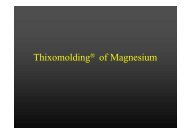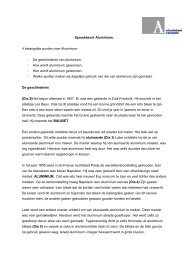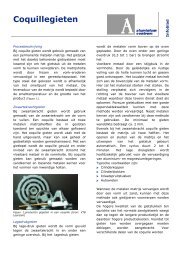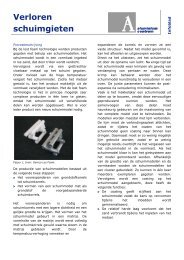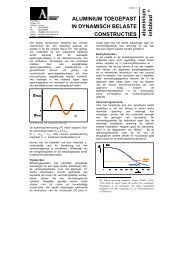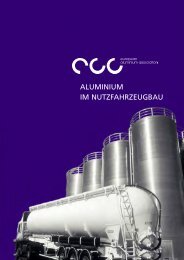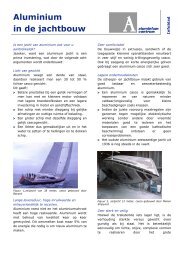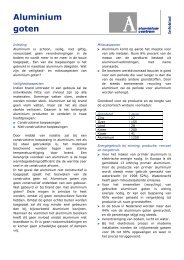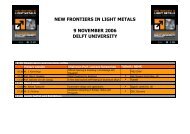2-Dr. Merete Hallenstvet - Het Aluminium Centrum
2-Dr. Merete Hallenstvet - Het Aluminium Centrum
2-Dr. Merete Hallenstvet - Het Aluminium Centrum
You also want an ePaper? Increase the reach of your titles
YUMPU automatically turns print PDFs into web optimized ePapers that Google loves.
Thermal emissivity is calculated from IR reflectivity measurement in the wavelength range2 – 25 µm using the Planck spectrum of a thermal (300 K) black body as the weightingfunction. The IR reflectivity data are measured using a Bruker FTIR IFS 55 integratingsphere.A Philips CM-30 TEM equipped with an X-ray EDS analytical system was used for crosssectionalexamination of coatings and pigments. The coated samples were embedded inepoxy in order to support the coating. Cross section samples for TEM analyses were madeby cutting thin foils of the embedded samples using a Reichert-Jung ultra microtome. Finalsectioning was performed with a MicroStar diamond knife.The heat loss through a window frame is measured in controlled climate chambersaccording to EN 12412-2. The window frame profiles are separating two chambers; onesimulating the interior of a room with constant temperature 20°C, and the other simulatingthe exterior side with constant temperature 0°C. The U-values are calculated from theheating required in the warm zone to maintain constant temperature at 20°C.Heat loss (U-value) calculations are based on the profile shape and the thermal emissivityof the surfaces of them, and are done in accordance with EN 10077-2.RESULTS AND DISCUSSIONPigment concentration and the comparison of extrusion and bondingIn order to have the highest possible IR reflectivity it is important to bond as muchmetallic pigment flakes as possible. The single most important factor for making a low-ecoating is the pigment addition level. Figure 4 show how the reflectance of thermalradiation vary with the pigment addition level and how different the reflectance is forextruded and bonded pigments. The thermal emissivities fond in table 1 are calculatedfrom the reflectance curves of figure 1.It is obvious that increasing pigment concentration will reduce the thermal emissivity. Thisis the case both for extrusion and bonding. It is also evident that the bonding process is givingcoatings with high thermal reflectivity (= low-e), whereas extruded coatings does not workfor our purpose.


